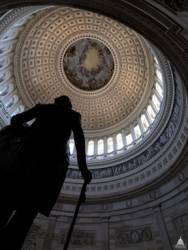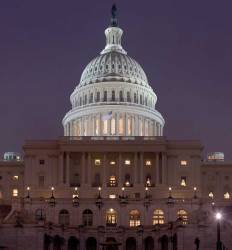
The House and Senate, now working with a fresh extension, have until December 4 to hammer out the details of a new highway bill. The legislation will authorize — but not necessarily appropriate — Highway Fund monies for state roadways for as long as six years and likely spin up research into intelligent transportation systems (ITS) and connected and autonomous vehicle technology — three sectors that rely on GNSS for success.
The House and Senate, now working with a fresh extension, have until December 4 to hammer out the details of a new highway bill. The legislation will authorize — but not necessarily appropriate — Highway Fund monies for state roadways for as long as six years and likely spin up research into intelligent transportation systems (ITS) and connected and autonomous vehicle technology — three sectors that rely on GNSS for success.
Although the Surface Transportation Reauthorization and Reform Act of 2015 (HR 22) is still subject to change, the House and Senate are likely to agree on the measures, particularly including resources aimed at implementing advanced technologies, said an expert following the legislation who requested anonymity in order to talk about the negotiations freely.
"Both bills have an innovation title that continues and reforms some of the existing research programs while adding new provisions to help accelerate the deployment of technology-based solutions," explained the source. "That will likely end up in the final bill."
Even so, how long that funding will last and just how much there will be, remains unclear.
"There’re a major details that need to be worked out," said the source, "including things like the overall funding level for the legislation and whether it’s going to be a five- or six-year bill or some other length. So there’re some major issues that I know they are hoping to decide here shortly."
Since the money in this case comes from the Highway Trust Fund, the lawmakers on the authorizing committees have the greater clout. That’s because trust funds are dedicated monies and therefore considered already appropriated — which puts the spending decisions in the hands of the authorizers.
Some of the research money is concentrated is in Title VI of the legislation, an innovation section formally called the Transportation for Tomorrow Act of 2015.
Among the title’s provisions is one proposing $67.5 million annually for research under 503(c) of USC title 23 — a wide-ranging section of the law that deals with highway safety and advanced concepts. This includes technology research and exploratory studies into such things as real-time transportation information, ITS implementation, and the acceleration of ITS technology.
Seriously Seeking GNSS
The bill would also create an Advanced Transportation and Congestion Management Technologies Deployment program, a new effort proposing $75 million a year to develop model deployment sites for the large-scale installation and operation of advanced technologies.
The grants could be used in a variety of areas in which GNSS technology would play a major role:
· advanced traveler information systems; advanced transportation management technologies; infrastructure maintenance, monitoring and condition assessment
· advanced public transportation systems; system performance data collection, analysis, and dissemination
· advanced safety systems including vehicle-to-vehicle (V2V) and vehicle-to-infrastructure (V2I) communication
· technologies associated with autonomous vehicles and collision avoidance
· integration of ITS with the Smart Grid and other energy distribution and charging systems
· electronic pricing and payment systems
· advanced mobility and access technologies such as dynamic ridesharing.
The Surface Transportation Block Grant Program also provides support for provision of capital and operating costs for "infrastructure-based intelligent transportation systems capital improvements,” including such activities as traffic monitoring, management, the development and implementation of state asset management plans and performance-based management programs.
Support for more efficient highways is scattered throughout the more than 850 pages of HR 22. For example Section 1108 of the bill would amend current law to allow financial support for the installation of V2I communication equipment.
Title V includes the Innovative Technology Deployment Grant Program, which establishes discretionary grants for the deployment of commercial motor vehicle information systems and networks.
Title VI would create the Surface Transportation System Funding Alternatives Program to provide money to states for demonstrating alternative revenue mechanisms. The goal is to test different types of user fees to make up for short falls in the Highway Trust Fund. The fund, which is fueled by gasoline taxes, is facing an uncertain future as gas prices fall and electric cars win converts.
A number of the provisions from the Future Trip Act (HR 2886) supporting connected and autonomous vehicles have also been included in the language being weighed by the conferees, said Isaac Sancken, a spokesman for Rep. Dan Lipinski, D-Illinois, who proposed the legislation.
Up for consideration is $1.5 million to $3 million each for 10 dollar-for-dollar matching grants to establish one university-based transportation center in each of the 10 federal regions of the Standard Federal Regions. Up to another 20 matching grants also could be made available
The draft language would also give the U.S. Department of Transportation (DoT) Office of Assistant Secretary for Research and Technology a year to convene an interagency working group and come up a national transportation research framework. The Government Accountability Office would be directed to assess transportation technology policy for autonomous vehicles and recommend pathways for implementing the technology, including suggesting policies for DoT.
With roughly 60 conferees from the two houses of Congress, each working hard to support their priorities, it will likely take every minute of the new extension to finalize the bill by deadline. Even so, the bill appears headed for passage without, for now, any of the show-stopping threats for amendments that have hampered other legislation.





